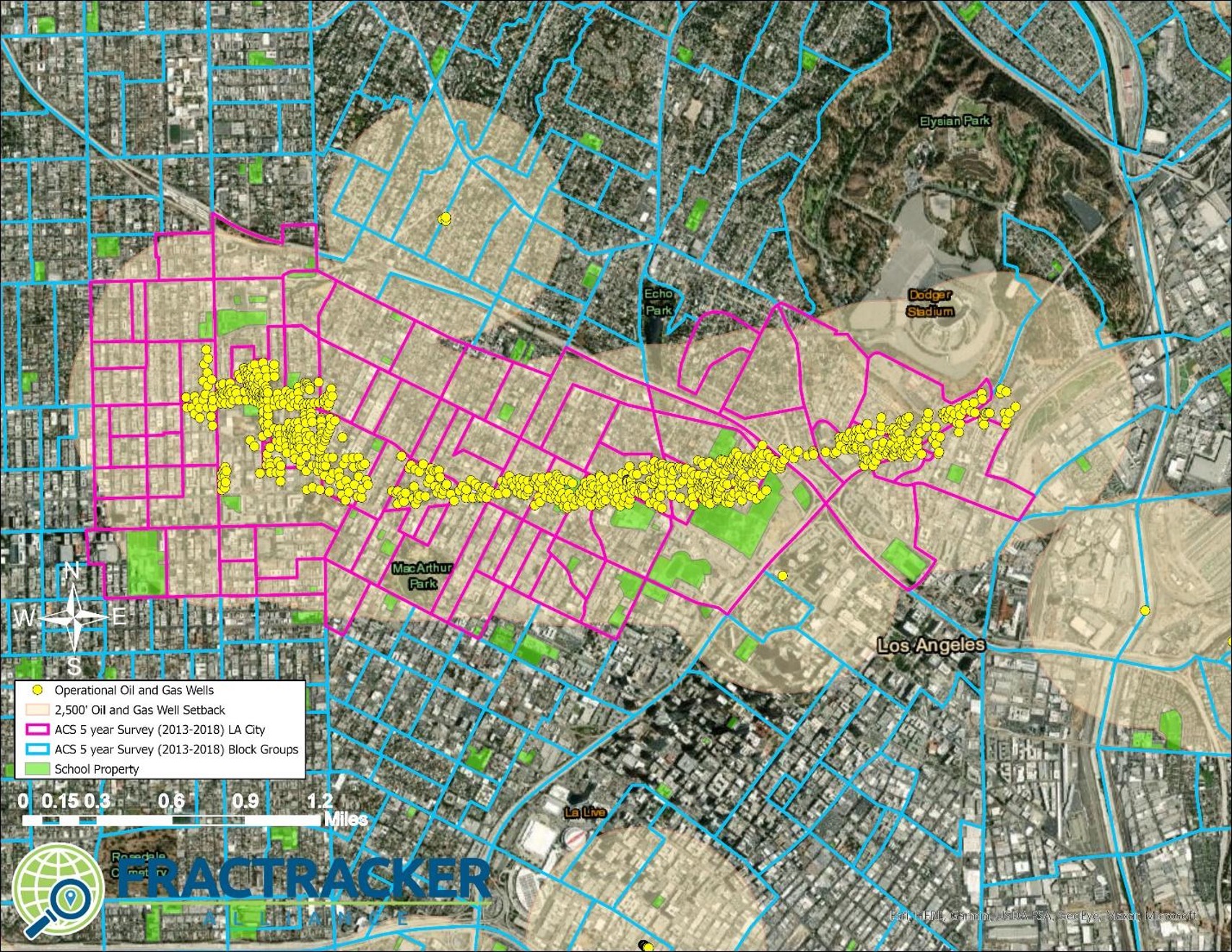Thanks in part to the tireless work of frontline communities, California is implementing stricter regulations on future oil and gas wells in order to protect public health and the environment. The draft rule, proposed by Governor Newsom in late October, would require a 3,200-foot buffer zone between new wells and vulnerable, populated areas like neighborhoods, hospitals and schools.
“There should be no oil and gas drilling next to where families are. It is definitely a moral imperative that the state take quick and concerted action. Every day of delay is another day that there’s a risk of communities being poisoned,” Neena Mohan, climate justice manager with the California Environmental Justice Alliance, told the San Francisco Chronicle.
Over 2 million California residents live within 2,500 feet of an operational oil and gas well, according to Fractracker. Fractracker, a nonprofit, has monitored and mapped fracking activity in Pennsylvania and New York since 2008 and began collecting data from the West Coast in 2013. The state government has relied almost exclusively on this data to quantify the impact of a 3,200-foot buffer zone, which would be the largest setback in the nation.

“Governor Newsom and his administration (are) now listening to the front line communities and health professionals who have borne the burden of proving they have been harmed by oil extraction,” Martha Dina Arguello, executive director of Physicians for Social Responsibility-Los Angeles, said in a statement published by Reuters.
If enacted, the rule will prohibit new wells within 3,200 feet of “sensitive receptor” areas, and existing production will need to create a mitigation plan. Such areas include private residences, condominium and apartment buildings, K-12 schools; daycare centers, businesses open to the public, dormitories, and health care facilities such as hospitals, hospices and retirement and nursing homes. Experts estimate over ⅔ of oil production in California will eventually be affected.
The City of Los Angeles is continuing the momentum in the fight against fossil fuel extraction. In January, LA City Council unanimously voted to ban new oil drills in the city and ordered a study on how to phase out existing wells over the next 20 years. More than 1,000 active or idle oil wells dot Los Angeles, often hidden behind windowless building facades, despite numerous scientific studies linking pollution from wells to health problems. 11th Hour Project grantees STAND-LA and Communities for a Better Environment (CBE) championed both this effort and the state-wide setback rule, set to be implemented later this year.

“Starting today, I have a little bit more hope for our communities. Our futures will hopefully not be full of emergency room visits, bloody noses or burdensome health impacts, but a cleaner future where black and brown families are the ones protected and valued.”
Ashley Hernandez, Communities for a Better Environment (interview)
The 11th Hour Project’s involvement in the anti-fossil fuel movement began with funding coalitions across the state, including STAND-LA, VISION and Last Chance Alliance. These groups have met weekly for almost 8 years and scanned this landscape constantly to ask what was working, what wasn’t, what was missing and how to best fill it. Though faced with SLAPP lawsuits, 24-hour flaring and a host of other insults, these advocates persevered to take on the most powerful industry in the world.
No one piece of this puzzle alone adds up to a win, it’s the combination of each small thing and a constant strategic evolution that gets us a little closer to success. In the last 12 months, Gov. Newsom has moved to ban ICE vehicles, vowed to wean the state off fossil fuels by 2045 and is now enacting the toughest setback in California history. These milestones would not be possible without the brilliant and tireless work of our grantees and partners who are creating the change our world urgently needs.